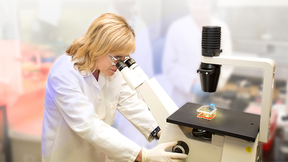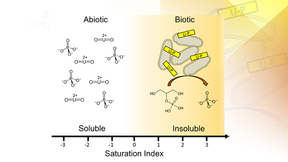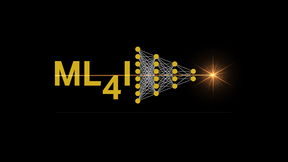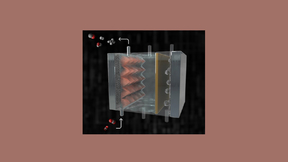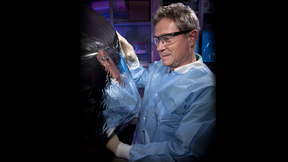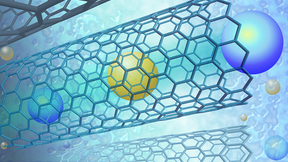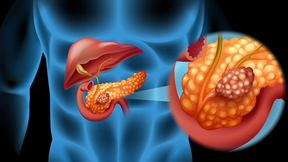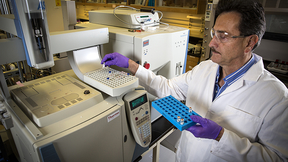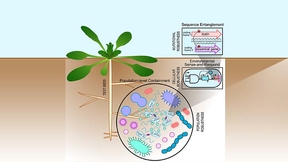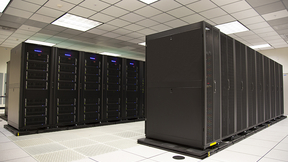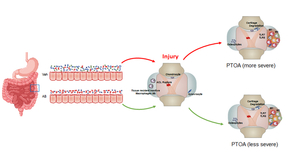Back
Long before the COVID-19 pandemic gripped the globe, Lawrence Livermore National Laboratory had been preparing to help the nation contend with biological threats. From its inception, Livermore has focused its scientific and technological expertise on strengthening the security of the United States.
Uranium contamination of soils and groundwater in the United States represents a significant health risk and will require multiple remediation approaches. Remediation strategies for uranium-contaminated sites have been the focus of research for decades due to the former production of nuclear materials across the United States. The U.S. Environmental Protection Agency (EPA)…
Lawrence Livermore National Laboratory (LLNL) is looking for participants and attendees from industry, research institutions and academia for the first-ever Machine Learning for Industry Forum (ML4I), a three-day virtual event starting Aug. 10. Pre-registrations are open for the forum, which aims to foster and illustrate the adoption of machine learning methods for…
COVID-19 HPC Consortium scientists and stakeholders met virtually on March 23 to mark the consortium’s one-year anniversary, discussing the progress of research projects and the need to pursue a broader organization to mobilize supercomputing access for future crises. The White House announced the launch of the public-private consortium, which provides COVID-19 researchers…
Using carbon dioxide (CO2) emissions to create value-added products is an attractive approach to reduce net greenhouse gas emissions. Processes such as the electrochemical reduction of CO2 to ethylene and ethanol offer a pathway to producing commodity chemicals without fossil fuels when they are powered using low-carbon electricity. Gas diffusion electrode (GDE) assemblies…
Scientists in the Forensic Science Center at Lawrence Livermore have partnered with San Diego State University and UCSD to advance bacteriophage therapy.
Lawrence Livermore National Laboratory (LLNL) scientists are leveraging their extensive experience studying the movement of airborne hazards to better understand the movement of virus-like particles through the air and to identify effective countermeasures. DNATrax released in a conference room.While the burden of airborne diseases is known to be large, its true scope is…
Following a terrorist bombing, can the bomb maker be identified by skin proteins left on the bomb components they handled? To address this question, Lawrence Livermore National Laboratory (LLNL) personnel from Weapons Complex Integration (WCI) and Global Security (GS) Forensic Science and Biosecurity Centers (FSC/BSC) subjected notional bomb components handled by LLNL…
Lawrence Livermore National Laboratory's (LLNL) popular lecture series, "Science on Saturday," is going virtual in 2021 with the theme “Combating COVID-19.” The series, targeted to middle and high school students, runs Saturdays at 10 a.m. Feb. 6 through Feb. 27. Each Saturday will feature a different lecture presented by leading Lawrence Livermore National Laboratory…
ConserV Bioscience Limited (CBL) and Lawrence Livermore National Laboratory (LLNL) have agreed to collaborate on the development of a broad-spectrum or “universal” coronavirus vaccine. This collaboration brings together CBL’s expertise in identifying antigens and LLNL’s nanolipoprotein delivery system. The vaccine has been designed to provide broad-spectrum protection…
Lawrence Livermore National Laboratory (LLNL) researchers have discovered that carbon nanotube membrane pores could enable ultra-rapid dialysis processes that would greatly reduce treatment time for hemodialysis patients. The ability to separate molecular constituents in complex solutions is crucial to many biological and man-made processes. One way is via the application…
Georgetown University, Lawrence Livermore National Laboratory (LLNL) scientists and collaborators have identified a protein that when removed from the body may help pancreatic cancer patients live longer. Pancreatic cancer is one of the most lethal forms of the disease and has the lowest survival rate. Because the tumors are solid, many modern chemotherapies to destroy the…
The Forensic Science Center is an important ally in the international endeavor to prohibit chemical warfare agents.
A machine learning model developed by a team of Lawrence Livermore National Laboratory (LLNL) scientists to aid in COVID-19 drug discovery efforts is a finalist for the Gordon Bell Special Prize for High Performance Computing-Based COVID-19 Research. Using Sierra, the world’s third fastest supercomputer, LLNL scientists created a more accurate and efficient generative…
Membrane-based systems have great potential as low energy alternatives in applications like desalination, pharmaceutical recovery, purification and waste treatment. Scientists at Lawrence Livermore National Laboratory (LLNL) have created the largest defect-free membranes reported to date that fully exploit the unique mass transport properties of carbon nanotubes as flow…
Lawrence Livermore National Laboratory (LLNL), along with partners Intel, Supermicro and Cornelis Networks, have deployed “Ruby,” a high performance computing (HPC) cluster that will perform functions for the National Nuclear Security Administration (NNSA) and support the Laboratory’s COVID-19 research. Funded by NNSA’s Advanced Simulation and Computing (ASC) program, the…
To reduce the risk of unintended ecological consequences from environmentally deployed, genetically engineered microorganisms (GEMS), Lawrence Livermore National Laboratory (LLNL) scientists and collaborators are developing built-in “security mechanisms” that ensure they function where and when needed. The team hopes to stabilize GEMs to prevent the transfer of potentially…
With funding from the Coronavirus Aid, Relief and Economic Security (CARES) Act, Lawrence Livermore National Laboratory (LLNL), chipmaker AMD and information technology company Supermicro have upgraded the supercomputing cluster Corona, providing additional resources to scientists for COVID-19 drug discovery and vaccine research. The recent addition of nearly 1,000 AMD…
Tearing an anterior cruciate ligament (ACL) can be an excruciatingly painful injury. Nearly 50 percent of these patients will develop a secondary form of osteoarthritis, deemed post-traumatic osteoarthritis (PTOA). Researchers from Lawrence Livermore National Laboratory (LLNL) and the UC Davis Medical Center have found that treatment with antibiotics prior to the injury…
In another month-and-a-half, a score of chemists from Lawrence Livermore National Laboratory's Forensic Science Center (FSC) will start two weeks of long days to undertake the Organization for the Prohibition of Chemical Weapons (OPCW) environmental proficiency test. Livermore chemists have been taking the proficiency tests each October since 2001, with LLNL serving as one…

